
Functional Medicine & Functional Foods (Food As Medicine)
This Topic Covers a thorough understanding of the powerful nutrient benefits and
antioxidant properties of certain foods. Which foods are considered power
foods and how food as medicine can be conformed to your lifestyle with
foods that taste great and provide optimum health benefits too.
 Introduction Introduction
The concept of consuming foods for health dates back
centuries to Hippocrates’ famous quote “Let food be thy medicine and
medicine be thy food.”
"By identifying the underlying causes of chronic health conditions,
Functional Medicine has been considered the Future of Medicine."
functionalmedicine.net
www.functionalmedicine.org, © Institute for Functional Medicine.
All rights reserved.
Functional medicine offers a new approach to management and prevention of
chronic disease that embodies the art and science of medicine. It integrates
what we know about how the human body works with patient-centered,
science-based care. Functional medicine addresses
the causes of chronic disease, which are rooted in lifestyle choices,
environmental exposures, and genetic influences.
Functional medicine emphasizes
the therapeutic partnership, which engages the heart, mind, and spirit
of both practitioner and client, and encourages moments of deep insight that
contribute to more comprehensive answers to stubborn, complex medical
problems.
www.eatright.org, Copyright
© | Academy of Nutrition and Dietetics, All Rights Reserved.
It
is the position of the American Dietetic Association that functional foods,
including whole foods and fortified, enriched, or enhanced foods, have a
potentially beneficial effect on health when consumed as part of a varied diet
on a regular basis, at effective levels. The Association supports research to
define further the health benefits and risks of individual functional foods and
their physiologically active components. Dietetics professionals will continue
to work with the food industry, the government, the scientific community, and
the media to ensure that the public has accurate information regarding this
emerging area of food and nutrition science.
Knowledge of the role of physiologically
active food components, from both phytochemicals and zoochemicals,
has changed the role of diet in health.
Functional foods have evolved as food and nutrition science has advanced beyond
the treatment of deficiency syndromes to reduction of disease risk...
Foods
can no longer be evaluated only in terms of macronutrient and micronutrient
content alone. Analyzing the content of other physiologically active components
and evaluating their role in health promotion will be necessary. The
availability of health-promoting functional foods in the US diet has the
potential to help ensure a healthier population. However, each functional food
should be evaluated on the basis of scientific evidence to ensure appropriate
integration into a varied diet.
top
 Alarming Statistics
Alarming Statistics
www.functionalmedicine.org, © Institute for Functional Medicine.
All rights reserved.
Today’s
Landscape: An epidemic of chronic disease threatens to compromise the
health of our population and the effectiveness and economics of our
healthcare system. Alarming projections suggest that future generations may
have shorter, less healthy lives if current trends continue unchecked.1
Because of its focus on acute care, the current medical model fails to
confront both the causes of and solutions for the chronic disease epidemic,
and must be replaced with a model of comprehensive care and prevention that
is systems-based, integrative, patient-centered, and much more effective.
AFMCP (Applying Functional Medicine in Clinical Practice) has been designed
to meet that challenge.
top
 What is Functional Medicine
What is Functional Medicine
integrativerd.org,
Copyright Dietitians in
Integrative and Functional Medicine
Functional Medicine addresses the underlying causes of
disease using a systems-oriented approach and engaging both patient and
practitioner in a therapeutic partnership.
Functional medicine involves understanding the origins, prevention, and
treatment of complex, chronic disease. Hallmarks of a functional
medicine approach include:
Patient-centered care . The focus of functional medicine is on
patient-centered care promoting health as a positive vitality; beyond just
the absence of disease. By listening to the patient and learning his or her
story, the practitioner brings the patient into the discovery process and
tailors treatments that address the individual’s unique needs.
An
integrative, science-based healthcare approach . Functional medicine
practitioners look “upstream” to consider the complex web of interactions in
the patient’s history, physiology, and lifestyle that can lead to illness.
The unique genetic makeup of each patient is considered, along with both
internal (mind, body, and spirit) and external (physical and social
environment) factors that affect total functioning.
Integrating
best medical practices. Functional medicine integrates traditional
Western medical practices with what is sometimes considered “alternative” or
“integrative” medicine, creating a focus on prevention through nutrition,
diet, and exercise; use of the latest laboratory testing and other
diagnostic techniques; and prescribed combinations of drugs and/or botanical
medicines, supplements, therapeutic diets, detoxification programs, or
stress-management techniques.
top
 The Approach of
Functional Medicine
The Approach of
Functional Medicine
functionalmedicine.net, Copyright © Sequoia Education Systems,
Inc.- All Rights Reserved
Functional Diagnostic Medicine is a growing field of
modern medicine. It offers a giant step forward in the diagnosis, treatment
and prevention of many of society’s chronic diseases. Doctors practicing
functional diagnostic medicine are able to identify the real causes of many
health conditions by combining the results of scientifically documented
tests.
These are not your standard medical tests but go the
next level investigating the biochemical and metabolic glitches likely to
cause a specific disease process.
Based on the results of these tests, physicians are
then able to develop personalized patient specific treatment protocols
designed to reverse, stop or prevent the disease and its related symptoms.
Unlike the disease specific approach which is geared to
suppress the expression of symptoms, physicians practicing functional
diagnostic medicine are delighted to discover that many diseases have a real
underlying cause which when found and corrected, can have a dramatic impact
on the health of their patients.
top
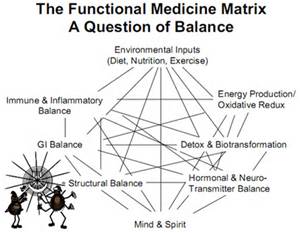 What You Can
Expect From Functional Medicine What You Can
Expect From Functional Medicine
www.functionalmedicine.org, © Institute for Functional Medicine. All rights reserved.
A patient visiting a functional medicine practitioner will likely have a
lengthy interview, fill out questionnaires on a variety of topics, and
undergo laboratory tests. The extensive information collected is used to
determine the underlying imbalances and influences (whether genetic,
environmental, or psychosocial) that have produced the context for disease
or dysfunction. The clinician evaluates seven key functional/biological
systems to understand the full network of vectors underlying the disease.
Then, customized interventions are initiated to reestablish balance and
functionality, and a comprehensive treatment plan is created to restore
health. Tools are drawn from both conventional and
integrative medicine, including lifestyle adjustments based on clinical
scientific research.
Functional medicine offers a paradigm
shift in clinical practice, thus producing a more effective response to
chronic disease.
Click
here to read the entire document.
top
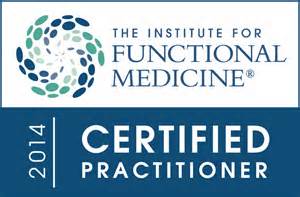 Working with a
Functional Medicine Practitioner
Working with a
Functional Medicine Practitioner
Reference -
www.functionalmedicine.org, ©
Institute for Functional Medicine. All rights reserved.
Functional medicine
practitioners promote wellness by focusing on the fundamental underlying
factors that influence every patient’s experience of health and disease.
The
Functional Medicine Approach to Assessment: The Institute for
Functional Medicine teaches practitioners how to assess the patient’s
fundamental clinical imbalances through careful history taking, physical
examination, and laboratory testing. The functional medicine practitioner
will consider multiple factors, including:
Environmental
inputs – The air you breathe and the water you drink, the particular
diet you eat, the quality of the food available to you, your level of
physical exercise, and toxic exposures or traumas you have experienced all
affect your health.
Mind-body
elements – Psychological, spiritual, and social factors all can have
a profound influence on your health. Considering these areas helps the
functional medicine practitioner see your health in the context of you as a
whole person, not just in terms of your physical symptoms.
Genetic makeup – Although
individual genes may make you more susceptible to some diseases, your DNA is
not an unchanging blueprint for your life. Emerging research shows that your
genes may be influenced by everything in your environment, as well as your
experiences, attitudes, and beliefs. That means it is possible to change the
way genes are activated and expressed.
Through assessment of these underlying causes and
triggers of dysfunction, the functional medicine practitioner is able to
understand how key processes are affected. These are the body’s processes
that keep you alive. Some occur at the cellular level and involve how cells
function, repair, and maintain themselves. These processes are related to
larger biological functions, such as:
All of these processes are influenced by both
environmental factors and your genetic make-up; when they are disturbed or
imbalanced, they lead to symptoms, which can lead to disease if effective
interventions are not applied.
A
Comprehensive Approach To Treatment: Most imbalances in
functionality can be addressed; some can be completely restored to optimum
function, and others can be substantially improved.
Prevention is paramount. Virtually every complex,
chronic disease is preceded by long-term disturbances in functionality.
Changing how the systems function can have a major
impact on the patient’s health. The functional medicine practitioner
examines a wide array of available interventions and customizes a treatment
plan including those with the most impact on underlying functionality.
Functional medicine expands the clinician’s tool
kit. Treatments may include combinations of drugs, botanical medicines,
nutritional supplements, therapeutic diets, or detoxification programs. They
may also include counseling on lifestyle, exercise, or stress-management
techniques.
The patient becomes a partner. As a patient, you become
an active partner with your functional medicine practitioner. This allows
you to really be in charge of improving your own health and changing the
outcome of disease.
top
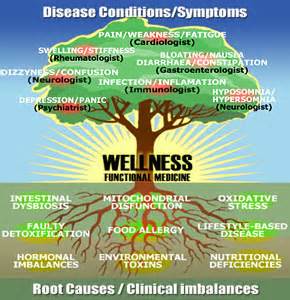 What Makes
a Functional Medicine Practitioner Effective?
What Makes
a Functional Medicine Practitioner Effective?
www.dabfm.org
- American Board of Functional Medicine © Copyright All Rights Reserved
Every patient
is unique - Every patient is biochemically different, these
variations can be simple or quite complex. Western medicine has struggled to
find a 'one size fits all' treatment for conditions. However not all
symptoms are of the same etiology. While the symptoms can be categorized and
compartmentalized, routing out the etiology is where the functional medicine
physician shines brightest.
Treat the
patient not the disease - So many physicians and patients refer to
the disease and not the person with the symptom. One might say that "He's
diabetic". Each patient is unique and because of this, the greatest gift we
can give a patient is to understand the cause of their reactive disorder.
Find out how this patient's biochemistry isn't being supported.
Homeodynamics - This
is physiology 101 and yet many physicians fail at appreciating the intricate
balance of negative feedback in the body. Since the 1920s, western medicine
has adopted very short sighted treatments that do not take into
consideration the basic homeodynamics of the patient. This leads to
misdiagnosis of many patients. In 2007, a study published in the New England
Journal of Medicine stated that as much as 50% of diagnosis and treatments
are incorrect in the US.
Pro-Active
Care - The idea of prevention in functional medicine is not merely
catch the disease early, it is truly based on the vital capacity of the body
to prevent the disease in the first place. When the biochemistry of the body
is supported, it works amazingly well; when the biochemistry of the body is
not supported or is interfered with, reactive conditions begin to manifest.
Functional Medicine is compelled to ensure that nutritional biochemistry is
provided while minimizing toxic exposure to interfering compounds.
Organocentric
- Humans are one of the few species that find it difficult to live 10 times
longer than their age of puberty. The body is designed to live 120 years,
yet most Americans are finding it difficult to live past 60. Functional
medicine is profoundly considerate of the idea that the patient is only as
good as their organs. Just one organ failure can terminate the patient's
life, longevity, or happiness. We are all going to die, but we sure want to
feel great till the end.
Happier Doctors, healthier patients! Imagine a world where 80% of patients are not just
chronically managed, where the national healthcare system isn't ranked 37th
in the world, where up to 90% of bankruptcies weren't due to unpaid medical
bills, where 1 out of 2 Americans didn't die of heart disease, 1 out of 2
didn't achieve cancer, 1 out of 3 didn't die of cancer, 1 out of 6 didn't
die of diabetes, where the healthcare costs of a company's employees
wouldn't bankrupt one of the largest corporations in the world.
Many physicians are sick and tired of not feeling like
they are helping patients, not trained well enough to understand the
etiology of disease, and not seeing the success they felt medicine provided.
Functional medicine has provided a beacon of hope to these physicians and
health care practitioners. All over the country medical doctors,
chiropractors, osteopaths, dieticians, nurses and physician assistants are
seeking out more and more education on functional medicine and how to apply
it in clinical practice. They see the success it brings, come join them.
top
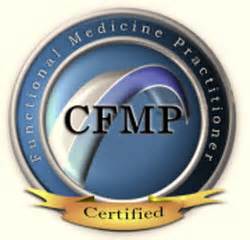 Search for
a Qualified Functional Medicine Practitioner
Search for
a Qualified Functional Medicine Practitioner
www.functionalmedicine.org - As a public service, IFM provides a list of
practitioners who have completed our five-day course, Applying
Functional Medicine in Clinical Practice. We are interested in helping
patients find healthcare professionals who are familiar with the concepts
and approaches of functional medicine.
“Find an
Integrative RDN” database. Search for a Nutrition Professional in
your area who practices integrative and functional nutrition. -
integrativerd.org
www.functionalmedicinedoctors.com - Functional Medicine
University (F.M.U.) makes available to the general public a list of health
care practitioners who have completed training in the Functional Medicine
Training Program offered by F.M.U.
top
 Why is Functional Medicine Called the Future of Medicine
Why is Functional Medicine Called the Future of Medicine
functionalmedicine.net,
Copyright © Sequoia Education Systems, Inc.- All Rights Reserved
"By identifying the underlying causes of chronic health
conditions, Functional Medicine has been considered the Future of Medicine."
Functional Medicine approach is designed to
significantly improve health. While the specific disease a person may have
is not ignored, the focus of therapy is to improve health through optimizing
biological, biochemistry and psychological function.
This is a highly individualized process. Two people
with the same diagnosis may require different diagnostic tests and
therapeutic interventions to promote health and well-being.
When successful, many of the symptoms that are the
primary concern of the individual will diminish in severity and the
individual will begin to experience a renewed sense of well being and a
significant increase in health and vitality.
top
 Power and Functional Foods
Defined
Power and Functional Foods
Defined
Reference -
www.mealsmatter.org,
Copyright Dairy Council of California. All Rights Reserved.
Functional foods are foods and food components that provide
health benefits beyond basic nutrition. Functional foods do more than just
provide nutrients – they may play a role in reducing your risk of disease or
in improving your health. These foods include health-promoting ingredients or
natural components found in conventional, fortified, enriched or enhanced foods.
There are many potential health benefits of consuming functional foods.
Nutritional research has shown that eating functional foods on a regular
basis, as part of a balanced and varied diet, can enhance health and reduce the
risk of many acute and chronic diseases.
Reference source -
www.healthyeating.org
The concept of consuming
foods for health dates back centuries to Hippocrates’ famous quote “Let food
be thy medicine and medicine be thy food.”
Since then, nutritional
science has evolved from a focus on identifying nutrients and amounts needed
to prevent deficiency diseases, to a focus on improving health and quality
of life. Although people have been consuming foods for specific health
reasons for years, the term “functional foods” was not commonly used until
the early 1990s…
The term “functional foods”
arose as nutritional science evolved from identifying and correcting
nutritional deficiencies to designing foods that promote optimal health and
reduce the risk of chronic disease. Focus group research showed that
“functional foods” was recognized readily and was preferred by consumers
over other terms such as “nutraceuticals” or “designer foods.”
Although there are a number of definitions for
functional foods, the most widely accepted is: “Foods and food components
that provide health benefits beyond basic nutrition for the intended
audience.” Examples include conventional foods, fortified, enriched or
enhanced foods.
General
features of functional foods include:
-
functional foods address
specific dietary needs or health conditions and are thus designed for
specific consumer groups in mind;
-
they are consumed as part of the regular diet;
-
their physiological functionality is based on
bioactive compounds;
-
the documentation of their safety and efficacy is
essential; and
-
any health claims or planned health claims are
based on scientific research and are consistent with regulations.
The use of functional foods
can be considered a continuum that ranges from the goal of maintaining
optimal health to treating disease.
The top ten benefits that consumers look
for in functional foods are:
-
reduced risk of cardiovascular diseases
-
reduced risk of cancer
-
weight loss/management
-
improved health in general
-
improved memory
-
reduced risk of other diseases
-
reduced osteoporosis
-
improved mental health
-
quicker reaction time
-
improved fetal health
top
 Unlocking the Secrets of Functional Food Components Unlocking the Secrets of Functional Food Components
integrativerd.org -
Copyright Dietitians in Integrative and Functional Medicine
Excerpts for IFT Expert Report
-
Food technology and improved nutrition have played
critical roles in the dramatic increase in life expectancy over the past 200
years, but the impact of diet on health is much broader than basic
nutrition. A growing body of evidence documents positive health benefits
from food components not considered nutrients in the traditional definition.
Scientific advances have allowed researchers to better
characterize the biological basis of disease states, understand the
metabolism of food at the cellular level, and identify the role of bioactive
components in food and assess their impact on metabolic processes. New
powerful analytical tools can enable scientists to unlock the biological
functions of vast numbers of food components and their role in disease
prevention and health promotion.
Functional foods can take many forms. Some may be
conventional foods with bioactive components that can now be identified and
linked to positive health outcomes. Some may be fortified or enhanced foods,
specifically created to reduce disease risk for a certain group of people.
Consumers can already select from a wide spectrum of foods that contain
functional components either inherently (e.g., soy protein, cranberries) or
via fortification (e.g., folate-fortified foods). Health benefits may result
from increasing the consumption of substances already part of an
individual’s diet or from adding new substances to an individual’s diet.
top
 Shifting the Food Paradigm
for Health and Wellness Shifting the Food Paradigm
for Health and Wellness
integrativerd.org -
Copyright
Dietitians in Integrative and Functional Medicine
Functional foods should be integral components of
established public health programs to reduce the risk of specific diseases
(Clydesdale, 1998)
A growing number of consumers perceive the ability to
control their health by improving their present health and/or hedging
against aging and future disease. These consumers create a demand for food
products with enhanced characteristics and associated health benefits.
In one study, 93% of consumers believed certain foods
have health benefits that may reduce the risk of disease or other health
concerns. In addition, 85% expressed interest in learning more about the
health benefits offered by functional foods (IFIC, 2002).
Using foods to provide benefits beyond preventing
deficiency diseases is a logical extension of traditional nutritional
interventions… Creating a scientifically valid distinction between food and
medicine has never been easy. Centuries ago, Hippocrates advised, “Let food
be thy medicine and medicine be thy food.” Early nutrition research resulted
in cures for numerous widespread deficiency-based diseases.
Recent
scientific advances have further blurred the line between food and medicine,
as scientists identify bioactive food components that can reduce the risk of
chronic disease, improve quality of life, and promote proper growth and
development.
top
 The
Traditional Paradigm vs. a New Paradigm of Food
The
Traditional Paradigm vs. a New Paradigm of Food
integrativerd.org -
Copyright Dietitians in Integrative and Functional Medicine
Traditional
fortification of foods with vitamins and minerals has been accepted by
consumers and regulators, but consumers should recognize the clear
distinction between the use and purpose of foods vs. drugs (see Fig. 1).
Food has traditionally been viewed as a means of
providing normal growth and development…
A new
self-care paradigm (adapted from Clydesdale,
1998) recognizes that foods can provide health benefits that can co-exist
with traditional medical approaches to disease treatment. Science has
clearly demonstrated additional dietary roles in reducing disease risk, and
consumers have learned that food has a greater impact on health than
previously known. At the same time, consumers recognize problems with the
current healthcare system, perceiving that it is often expensive,
time-constrained, and impersonal.
Functional foods fit into a continuum that ranges from
health maintenance/promotion to disease treatment (see Fig. 2)… Functional
foods should be integral components of established public health programs to
reduce the risk of specific diseases (Clydesdale, 1998).
www.ncbi.nlm.nih.gov
…Interest in functional foods skyrocketed in the last
decade due to a number of key factors, including the growing self-care
movement, changes in food regulations and overwhelming scientific evidence
highlighting the critical link between diet and health. The interest in
functional foods has resulted in a number of new foods in the marketplace
designed to address specific health concerns, particularly as regards
chronic diseases of aging. In addition to new foods designed specifically to
enhance health, however, functional foods can also include those
traditional, familiar foods for which recent research findings have
highlighted new health benefits or dispelled old dogma about potential
adverse health effects. An excellent example is the American egg-Nature's
original functional food. Eggs have not traditionally been regarded as a
functional food, primarily due to concerns about their adverse effects on
serum cholesterol levels. Furthermore, it is now known that there is little
if any connection between dietary cholesterol and blood cholesterol levels
and consuming up to one or more eggs per day does not adversely affect blood
cholesterol levels. Finally, eggs are an excellent dietary source of many
essential (e.g., protein, choline) and non-essential (e.g.,
lutein/zeaxanthin) components which may promote optimal health.
Nutrition in the new millennium will be dramatically
different than it was in the 20th century. Completion of the human genome
project will facilitate the identification of humans predisposed to
diet-related diseases. Targeted or 'prescription'
nutrition will become the norm, enabling the food and medical industries to
provide timely and individualized approaches to disease prevention and
health promotion. The egg will continue to play an important role in
the changing face of functional foods.
top
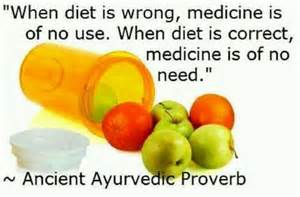 Tailoring Diets for
Special Needs
Tailoring Diets for
Special Needs
Functional foods can address many consumer needs within
the new paradigm when used as part of a diet tailored to address the special
health needs of a specific group of consumers. In addition to those with
needs because of chronic medical conditions, other groups with special needs
include women of childbearing age, adolescent girls and boys, athletes,
military personnel, and the elderly.
The Institute of Medicine (IOM, 2000) reported that
poor nutritional status is a major issue for older citizens and that at
least four health conditions (under nutrition, cardiovascular disease,
diabetes, and osteoporosis) would benefit from nutritional intervention in
either “preventative or treatment modes.” Some functional foods are already
available for each of these purposes, but more are needed. Many elderly
individuals may benefit by expanding their use of functional foods and
supplements, particularly where new research can guide their selection of
those foods to meet specific needs.
It would be unreasonable to expect functional foods to
address all of the elderly’s medical needs, but functional foods can improve
health and wellness, minimize costs, and provide consumers with greater
control.
top
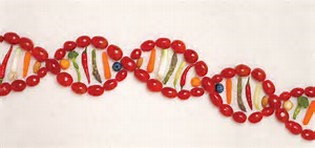 The Intersection of Food and
Genes
The Intersection of Food and
Genes
www.ift.org
- © Institute of Food Technologists
Understanding of human dietary requirements results
from developments in many scientific disciplines, including food science,
nutrition, chemistry, biochemistry, physiology, and genetics. New research
in proteomics, nutrigenomics, metabolomics, and other disciplines may help
identify the biological basis by which food components promote health and
wellness. Continuing and accelerating this research will reveal the effects
of nutrients on the molecular-level processes in the body and document the
variable effects of nutrients under different conditions.
Nutrigenomics - For the purposes of
this discussion, nutrigenomics is defined as the interaction of dietary
components with genes.
The dietary components of interest can be essential
nutrients (e.g., vitamins, minerals, fatty acids), other bioactive
substances (e.g., phytochemicals) or metabolites of food components (e.g.,
retinoic acid, eicosanoids). On the one hand, nutrigenomics represents a
logical extension of biotechnology, molecular medicine, and
pharmacogenomics; on the other hand, it represents a revolution in how
nutrition and diets are viewed in relation to health (Fogg Johnson and
Merolli, 2000; Patterson et al., 1999).
Read the full report
and panel’s recommendations here.
- The Institute of Food Technologists (IFT) .
top
 What the Future
Holds for Functional Food What the Future
Holds for Functional Food
Retrieved from -
www.healthyeating.org
With the advance of nutritional genomics, it may be
possible in the future to design foods and diets to regulate gene
expression, change metabolism and thus prevent specific diseases to which an
individual is prone. As a result, the ability to tailor diets to meet
specific needs and health goals will become more highly individualized.
Consumer awareness and demand for such personalized diets will undoubtedly
increase.
Research will continue to identify foods and food
components that can play a role in optimizing health and preventing disease.
Expanded research on the benefits of specific nutrients and bioactive
components, levels of consumption needed to reap health rewards, and
biomarkers and physiological endpoints will further our understanding of
functional foods.
top
 Education & Application
-
the Health Professional’s Role
Education & Application
-
the Health Professional’s Role
Retrieved from -
www.healthyeating.org
Specific suggestions on how the health professional can
guide consumers to incorporate appropriate levels of functional foods into
their diets to optimize health and reduce disease risk include:
-
Stay abreast of research showing benefits of
specific foods and food components, distinguishing between the study
types (animal, laboratory, epidemiological, randomized clinical trials)
and strengths and limitations of each. Often, a single study can be
misconstrued as the final word without considering the whole body of
research on the food or component in question.
-
Be aware of foods and products in the marketplace
that tout specific component(s) and health benefits, and the levels that
are present in a typical serving. Keep in mind that availability of
functional foods can vary based on geographical location.
-
Be ready to translate scientific evidence into
practical and applicable dietary advice for clients. Offering clients
accurate and personally relevant information will empower them to
control their own health through the choices they make.
-
Discourage clients from the mindset that there is a
single “magic bullet” food or product that can guarantee health or
cure/prevent disease. The best advice is to choose a wide range of foods
from each of the food groups to ensure consumption of a multitude of
beneficial components. A change in lifestyle, including appropriate
physical activity, may also be necessary to reach their goals.
-
Monitor your clients’ consumption of functional and
fortified foods as well as use of supplements, to ensure they are not
consuming excesses of any particular nutrient(s). Health professionals
with minimal training in nutritional sciences can rely on dietitians as
the primary resource to carry out this charge.
-
Age, gender, activity level, allergies and
intolerances and disease risk are obvious factors influencing dietary
recommendations. Consider also cultural and ethnic preferences, weight
loss and performance goals, socioeconomic factors that might play a role
in food procurement, availability and access, and family and work
environments – all in a holistic fashion – to optimize buy-in and
compliance with dietary advice.
top
 Assessing Claims of Functional Foods
Assessing Claims of Functional Foods
americannutritionassociation.org - © American Nutrition Association
With more and more products on the market claiming to
have health benefits for the consumer, this panel will help you better
understand how to evaluate these claims and separate fact from fiction. We
will hear from experts who will shed light on the federal and state
regulatory landscape covering these issues, as well as strategy and recent
data to help you tackle functional food coverage
with more accuracy and integrity.
Bruce Silverglade, legal director of the Center for
Science in the Public Interest (CSPI), made these points...:
-
The FDA has been increasing enforcement
actions recently. Most involved medical claims, not structure-function
claims.
-
Misleading structure function claims:
-
Ocean Spray® Cranberries (“help cleanse and purify your body”)
-
DanActive™ dairy-based probiotic supplement beverage (“helps
strengthen your body’s defenses”)
-
“While
existing laws for health claims and food additive approvals are
adequate, the FDA needs to update its enforcement policies to keep
control of the marketplace”
-
For
foods (dietary supplements already have these rules), CSPI wants a
definition and pre-market notification of the use of “novel ingredients”
used in fortified foods. Also for their claims, as well as a scientific
standard for claims.
-
Novel
ingredients should meet the FDA’s fortification policy and not be added
to foods of low nutritional value.
-
There
should be no distinction between structure-function claims and Health
Claims, since consumers don’t “get” the difference. Both types of claims
should be allowed based only on “Significant Scientific Agreement”, not
industry selected studies.
-
Functional foods “must be regulated under the food safety and labeling
laws, and not under laws pertaining to dietary supplements”…
Marilynn Marchione, AP Medical Writer, made these points...
-
Many
functional foods are “little more than
dressed-up junk food”
-
We
should be concerned about consuming “too much of certain nutrients, plus
too many calories and fats”
-
The
FDA “is paying more attention to health claims on functional foods”
-
Claims that fortified foods can “boost
immunity” are vague with little science for back up…
Neil E. Levin, C.C.N., D.A.N.L.A., programs chair,
American Nutrition Association; nutrition education manager, NOW Foods
made these points...
FDA Regulated Health Claims
-
It’s
not legal to market a DS [dietary supplement] as a treatment or cure for a specific condition
-
Functional food claims should be regulated
-
We
don’t need new laws, we need to enforce the current laws
-
Agency
priorities and resources have always been an issue in regulation
-
Natural doesn’t necessarily mean something is safe or effective
-
There is a bias that natural can be better utilized and is safer,
but that’s not always true
-
They
don’t require safety approval premarket
-
They
can have side effects and interactions
-
Test
tube studies don’t prove that the same effect will happen in the human
body
-
Structure-function claims should primarily be based on human clinical
studies
-
Be skeptical; bring
the same skepticism to DS critics (medical interests, drugs, medical
journals) as DS companies
Read in entirety…americannutritionassociation.org
top
 Scientific
Criteria
Scientific
Criteria
Reference -
www.foodinsight.org
Many academic, scientific, and regulatory organizations are
considering ways to establish the scientific basis to support and further
validate claims for functional components or the foods containing them. FDA regulates
food products according to their intended use and the nature of claims made on
the package. Five types of health-related statements or claims are allowed on
food and dietary supplement labels:
- Nutrient
content claims indicate
the presence of a specific nutrient at a certain level.
- Structure
and function claims
describe the effect of dietary components on the normal structure or
function of the body.
- Dietary
guidance claims describe
the health benefits of broad categories of foods.
- Qualified
health claims convey a
developing relationship between components in the diet and risk of disease,
as reviewed by the FDA and supported by the weight of credible scientific
evidence available.
- Health
claims confirm a
relationship between components in the diet and risk of disease or health
condition, as approved by FDA and supported by significant scientific
agreement.
A
large body of credible scientific research is needed to confirm the benefits
of any particular food or component. For functional foods to deliver their
potential public health benefits, consumers must have a clear understanding
of and a strong confidence in the scientific criteria that are used to
document health statements and claims. The scientific community continues to
increase its understanding of the potential for functional foods and their
role in health…."
top
Reference -
www.fda.gov
Claims that can be used on food
and dietary supplement labels fall into three categories:
health claims, nutrient
content claims, and structure/function claims. The responsibility for
ensuring the validity of these claims rests with the manufacturer, FDA, or, in
the case of advertising, with the Federal Trade Commission.
Health claims describe a relationship between a
food, food component, or dietary supplement ingredient, and reducing risk of
a disease or health-related condition. There are three ways by which FDA
exercises its oversight in determining which health claims may be used on a
label or in labeling for a food or dietary supplement: 1) the 1990 Nutrition
Labeling and Education Act (NLEA) provides for FDA to issue regulations
authorizing health claims for foods and dietary supplements after FDA's
careful review of the scientific evidence submitted in health claim
petitions; 2) the 1997 Food and Drug Administration Modernization Act
(FDAMA) provides for health claims based on an authoritative statement of a
scientific body of the U.S. government or the National Academy of Sciences;
such claims may be used after submission of a health claim notification to
FDA; and 3) the 2003 FDA Consumer Health Information for Better Nutrition
Initiative provides for qualified health claims where the quality and
strength of the scientific evidence falls below that required for FDA to
issue an authorizing regulation. Such health claims must be qualified to
assure accuracy and non-misleading presentation to consumers. The
differences between these three methods of oversight for health claims are
summarized below.
Health claims:
Health claims describe a relationship between a food, food component, or
dietary supplement ingredient, and reducing risk of a disease or health-related
condition.
A
"health claim"
by definition has two essential components: (1) a substance (whether a food,
food component, or dietary ingredient) and (2) a disease or health-related
condition. A statement lacking either one of these components does not meet
the regulatory definition of a health claim…
Dietary guidance statements used on food labels must be
truthful and non-misleading. Statements that address a role of a specific
substance in maintaining normal healthy structures or functions of the body
are considered to be structure/function claims. Structure/function claims
may not explicitly or implicitly link the relationship to a disease or
health related condition. Unlike health claims, dietary guidance statements
and structure/function claims are not subject to FDA review and
authorization…
Health Claims Based on Authoritative Statements. The
Food and Drug Administration Modernization Act of 1997 (FDAMA) provides a
second way for the use of a health claim on foods to be authorized. FDAMA
allows certain health claims to be made as a result of a successful
notification to FDA of a health claim based on an "authoritative statement"
from a scientific body of the U.S. Government or the National Academy of
Sciences. FDA has prepared a guide on how a firm can make use of
authoritative statement-based health claims. This guide can be found at: Notification
of a Health Claim or Nutrient Content Claim Based on an Authoritative
Statement of a Scientific Body. FDAMA
does not include dietary supplements in the provisions for health claims
based on authoritative statements. Consequently, this method of oversight
for health claims cannot be used for dietary supplements at this time.
Qualified Health Claims. FDA's
2003 Consumer Health Information for Better Nutrition Initiative provides
for the use of qualified health claims when there is emerging evidence for a
relationship between a food, food component, or dietary supplement and
reduced risk of a disease or health-related condition. In this case, the
evidence is not well enough established to meet the significant scientific
agreement standard required for FDA to issue an authorizing regulation.
Qualifying language is included as part of the claim to indicate that the
evidence supporting the claim is limited. Both conventional foods and
dietary supplements may use qualified health claims. FDA uses its
enforcement discretion for qualified health claims after evaluating and
ranking the quality and strength of the totality of the scientific evidence.
Nutrient content claims:
The Nutrition Labeling and Education Act of 1990 (NLEA) permits the
use of label claims that characterize the level of a nutrient in a food
(i.e., nutrient content claims) made in accordance with FDA's authorizing
regulations. Nutrient content claims describe the level of a nutrient or
dietary substance in the product, using terms such as free, high, and low,
or they compare the level of a nutrient in a food to that of another food,
using terms such as more, reduced, and lite...
Most
nutrient content claim
regulations apply only to those nutrients or dietary substances that have an
established daily value: A
Food Labeling Guide - VII. Nutrition Labeling.
The requirements that govern the use of nutrient content claims help ensure
that descriptive terms, such as high or low, are used consistently for all
types of food products and are thus meaningful to consumers. Healthy has
been defined by a regulation as an implied nutrient content claim that
characterizes a food that has "healthy" levels of total fat, saturated fat,
cholesterol and sodium. Percentage claims for dietary supplements are
another category of nutrient content claims. These claims are used to
describe a percentage level of a dietary ingredient for which there is no
established Daily Value. Examples include simple percentage statements such
as "40% omega-3 fatty acids, 10 mg per capsule," and comparative percentage
claims, e.g., "twice the omega-3 fatty acids per capsule (80 mg) as in 100
mg of menhaden oil (40 mg)." (See 21 CFR 101.13(q) (3)(ii)). A summary of
the rules for use of nutrient content claims can be found in Chapter VI of The
Food Labeling Guide. Examples of
nutrient content claims can be found in Appendices A and B of The Food
Labeling Guide: Appendix
A: Definitions of Nutrient Content Claims and Appendix
B: Additional Requirements for Nutrient Content Claims.
Structure/function claims:
The Dietary Supplement Health and Education Act of 1994 (DSHEA)
established some special regulatory procedures for such claims for dietary
supplement labels. Structure/function claims describe the role of a nutrient or
dietary ingredient intended to affect normal structure or function in humans,
for example, "calcium builds…
Structure/function claims
have historically appeared on the labels of conventional foods and dietary
supplements as well as drugs. However, the Dietary Supplement Health and
Education Act of 1994 (DSHEA) established some special regulatory procedures
for such claims for dietary supplement labels. Structure/function claims
describe the role of a nutrient or dietary ingredient intended to affect
normal structure or function in humans, for example, "calcium builds strong
bones." In addition, they may characterize the means by which a nutrient or
dietary ingredient acts to maintain such structure or function, for example,
"fiber maintains bowel regularity," or "antioxidants maintain cell
integrity," or they may describe general well-being from consumption of a
nutrient or dietary ingredient.
Structure/function claims may also describe a benefit
related to a nutrient deficiency disease (like vitamin C and scurvy), as
long as the statement also tells how widespread such a disease is in the
United States. The manufacturer is responsible for ensuring the accuracy and
truthfulness of these claims; they are not pre-approved by FDA but must be
truthful and not misleading. If a dietary supplement label includes such a
claim, it must state in a "disclaimer" that FDA has not evaluated the claim.
The disclaimer must also state that the dietary
supplement product is not intended to "diagnose, treat, cure or prevent any
disease," because only a drug can legally make such a claim. Further
information regarding structure/function claims can be found in FDA's
January 9, 2002 Structure/Function
Claims Small Entity Compliance Guide.
top
 Benefits of Whole Food Benefits of Whole Food
jn.nutrition.org
- Copyright © JN Online by the American Society for Nutrition
Value
of a varied diet:
The weight of scientific evidence indicates that the optimal approach for
achieving a health benefit from the intake of nutrients and other
physiologically active constituents is through the consumption of a varied
diet that is rich in plant foods. In reality, each vegetable contains
numerous different nutrients and phytochemicals— a
biologic circumstance that is not currently replicated in pill form. In addition, the
assumption that a combination of plant constituents that are naturally occurring
is maintained at equivalent levels of biologic activity when extracted, dried,
and compacted
into pill form is likely unfounded.
Pharmaceutical companies have isolated many food components into supplement
form, including allylic sulfides (garlic), isoflavones (soy), anthocyanin
(bilberry extract), and glycyrrhizin (licorice), to name only a few. In the
United States, tens of billions of dollars are spent annually on dietary
supplements (76). The rapid growth in functional foods might
be considered the food industry’s response to growing sales of dietary
supplements. Supplements can provide nutrients and other physiologically active
components in a potentially unbalanced and concentrated form that may be far
different from the form used in research studies.
Nutrients
and other bioactive food components that occur naturally in foods act
synergistically with other dietary elements such as fiber to promote health. The
food industry and dietetics professionals have a unique opportunity to
promote whole foods as an alternative to dietary supplementation through the
integration of appropriate functional foods into a varied eating plan for
consumers. In
addition, using sound scientific evidence, functional food products can be
developed that further enhance the health benefits of food. In some
circumstances, a combined food supplement approach may afford the greatest
protection, and, to this end, the Office of Dietary Supplements at the National
Institutes of Health has developed a strategic plan to encompass such a research
focus (77).
top
 Functional
Food Enhancements Functional
Food Enhancements
Reference -
www.organicconsumers.org
Functional foods are already a widespread, although comparatively recent,
trend in the European food market. While still a new direction for genetic
modification, you can find many non-GM functional food products
lining shop shelves already, ranging from chocolate bars to spreads, cereals and
yoghurt.[2] The main novelty for these functional foods is their claimed health
benefits. That many food products can be beneficial for your health isn’t new.
And those certain products are healthier than others isn't new either - after
all, 'light' and 'diet' versions of diverse products have been around for years.
But what is new with many of these functional foods is that either they
contain additives which - it is claimed - give them totally new (nutritional)
qualities, or that the manufacturer has completely eliminated certain qualities
from the food, such as allergenic proteins, thus making it seem more healthy.[3]
Functional food products already on the market include examples where the
product has vitamins added, or where an allegedly more healthy form of fat is
used in the food manufacturing process. Thus, much of the functional food
already on the market is processed food, where the extra 'function' is added
during the processing, and not - as yet - through genetic manipulation.
Biotechnology, the industry alleges, could hold the key to solving many
of the world's most intractable health problems. At the same time, it is
claimed, the technology could also liberate people from having to take drugs in
pill or vaccine form.[7] However, there is no clear definition of the term’
functional foods', so confusion reigns throughout the industry as to what the
phrase really means.[8] Several other related terms are also being kicked about,
including 'nutraceuticals' and 'medical foods', with 'output traits' being added
to products through 'value-added' biotechnology. This report will not try to
define 'functional foods' any further, but instead uses it as a broad
description for products that have a (claimed) consumer benefit -
ranging from taste to
nutritional value, or for food as a carrier of medicine.
Many of the companies involved are not (as yet) using genetic
engineering, and instead add additives during processing. Companies are
converging on the functional foods sector both from the pharmaceutical industry
and the food industry, either by introducing new brands or by 'repositioning'
existing brands with functional enhancements. [Functional foods therefore
represent "a further narrowing of the boundary between the food and
pharmaceutical industries", as the analyst firm Data Monitor puts it.[85]
And even if most of them today might be free from GM products, there is a
great danger that they will go down this road in the future.
top
 Functional
Food Listings & Nutritional Benefits
Functional
Food Listings & Nutritional Benefits
Medicalcenter.osu.edu - pdf -
Ten Top Power Foods
www.mealsmatter.org
These foods include health-promoting ingredients or natural
components found in conventional, fortified, enriched or enhanced foods.
Listing of functional foods:
What It’s Good
For
Active Components
Recipes
www.worldhealth.net
- The American Academy of Anti-Aging Medicine (A4M)
FUNCTIONAL FOODS & FOOD COMPONENTS: Search for
Anti-Aging information and Medical News in Functional Foods & Food
Components within the Longevity and Age Management section.
www.foodinsight.org
- The International Food Information Council
You can find various
resources, videos and consumer research related to functional foods and
health as well as easy tips on how to include them in your diet.
www.foodinsight.org - Examples of Functional Food
www.ift.org - Institute of
Food Technologists (IFT)
Discover applied science and market trends associated
with the development of foods to maintain and improve health. IFT helps you
learn and grow with other leading advocates for weight management,
nutrigenomics, and foods for the prevention and management of diabetes,
heart disease, bone/joint diseases and cancer.
www.foodinsight.org - Functional Foods Fact Sheet Antioxidants
Foods
that Fight Cancer
American
Institute for Cancer Research
Searchable
Database for Foods to Defeat Cancer
top
|

|


